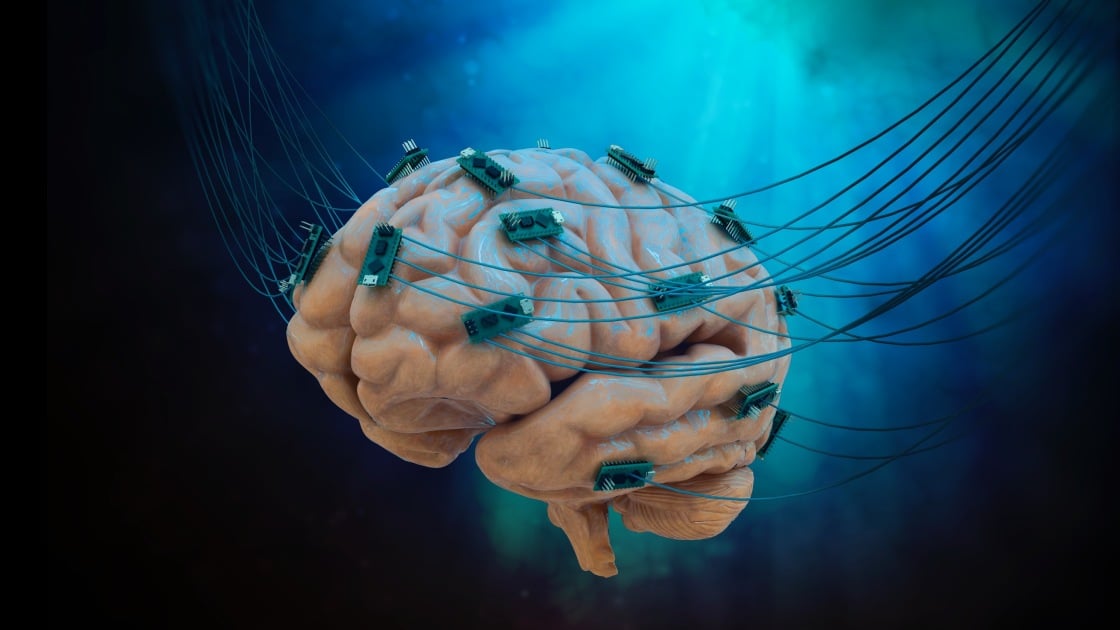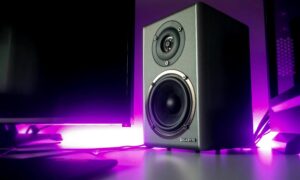Biological computing is emerging as a credible experimental alternative to conventional electronics as researchers look for methods that cut energy use while delivering new forms of information processing. A collaboration between the Australian startup Cortical Labs and the UK synthetic biology company bit.bio has produced a laboratory device called CL1 that illustrates the current state of the field.
The review is prepared by Dmitry Baraishuk, a partner and Chief Innovation Officer at a custom healthcare and biotech software development agency Belitsoft.
CL1 is a research device that combines living human neurons with microelectrodes. The neurons are produced from reprogrammed skin cells known as induced pluripotent stem cells. Bit.bio supplies two homogeneous neuron types for the device: an excitatory population that drives electrical signaling and an inhibitory population that moderates it. The neurons are plated as a flat sheet on the silicon array, which contains thousands of electrodes. Each electrode can deliver small voltage pulses into the cells and record the voltage changes that the cells generate.
The culture and its electronics are inside a sealed life-support enclosure about the size of two shoeboxes. A slow, continuous flow of nutrient medium supplies glucose, amino acids, and other factors the neurons need, and removes metabolic waste. Temperature and carbon dioxide levels are kept at physiological values.
Even under optimal conditions, each culture remains viable for only a few months. When the neurons begin to die, the enclosure is cleaned, a fresh layer of cells is plated, and any training procedures start from the beginning because there is no mechanism to copy the wiring of the old network into the new one.
Cortical Labs builds the electronic hardware, the fluidics, the control software, and the external computer interface. Bit.bio provides the cell lines and the differentiation protocols. Together they market CL1 as the first commercially available biological computer.
The device is used today as a laboratory instrument. Multiple CL1 units can be mounted in a standard rack and operated in parallel.
The electrode array works in a closed loop. When a predefined pattern of neuronal firing is detected, the control software sends a selected stimulus back. During a standard benchmark, the array connects to a simple on-screen version of the video game Pong. If the neuronal activity moves the paddle to hit the ball, the software delivers a low-frequency sine wave signal across the culture. If the paddle misses, the software delivers broadband white noise. Over repeated trials, the network reorganizes its synaptic connections, and the hit rate rises. The final score serves as a quantitative measure of how well the neurons process information under a given set of conditions.
Researchers used the Pong benchmark to study antiseizure drugs. They first drove the neurons into an epilepsy-like state by increasing excitatory activity. Then they applied phenytoin, perampanel, and carbamazepine at controlled concentrations. All three compounds reduced excessive firing. Carbamazepine at two hundred micromolar also improved the Pong score and produced a steadier overall firing pattern. The experiment ran in a few weeks, used only human cells, and avoided animal preparations. The results were published in the journal Communications Biology.
Pharmaceutical companies see two immediate advantages in CL1. First, the neurons are of human origin, so the observed responses may predict clinical outcomes more directly than data from rodents. Second, the electrode grid records activity continuously, yielding large data sets that describe firing rates, burst structure, and benchmark performance with second-by-second resolution. Laboratories can run several units at once, each seeded with neurons that carry different genetic variants or disease mutations, and screen candidate compounds under uniform conditions.
The longer-term appeal is energy efficiency. A neuron uses ion channels and neurotransmission to switch states. Each switch consumes many orders of magnitude less energy than a transistor. If engineers can find reliable ways to encode and decode digital information in patterns of neuronal spikes, they may build processors that solve selected tasks at very low power budgets.
Current work on encoding is exploratory. Cortical Labs is testing pattern recognition tasks such as distinguishing handwritten digits. More complex data representations are not yet available.
Several constraints limit broader adoption. Cultures are short-lived, so any network that develops useful behavior must be retrained after a few months. The life-support system requires sterile technique, regular medium changes, and careful control of temperature, pH, and gas exchange. The present hardware supports only two-dimensional cultures. Moving to three-dimensional tissues, which could host larger networks, would require new electrode designs and more demanding perfusion systems.
Ethical questions focus on whether a large network of human neurons might develop elements of consciousness. The developers state that a CL1 culture is sentient in the limited sense that it responds to stimuli and adapts, but it shows no signs of self-awareness. The neurons lack the structured layering, sensory inputs, and long-range connectivity seen in a human brain. Cortical Labs and bit.bio have said they will consult bioethics experts as the technology scales.
Other groups are testing different ways to build biological computers. FinalSpark in Switzerland and Biological Black Box in the United States grow three-dimensional “mini-brains” (organoids) instead of using a flat sheet of cells. Some university labs shine light on the cells (optogenetics) rather than using electrodes, and others add artificial blood vessel systems to keep the cells alive longer. No one approach is clearly better, and results are hard to compare because each lab runs its own tests.
Today the main income for these projects comes from contract research. Drug development companies pay to see how neurons with certain disease traits react to new compounds. Cortical Labs sells complete CL1 units and also runs tests as a service. Bit.bio supplies customized cell lines.
About the Author:

Dmitry Baraishuk is a partner and Chief Innovation Officer at a healthcare software development company Belitsoft (a Noventiq company). He has been leading a department specializing in custom software development for 20 years. The department has hundreds of completed and ongoing projects in AI software development, healthcare and finance IT consulting, application modernization, cloud migration, data analytics implementation, and more for startups and enterprises in the US, UK, and Canada.





























